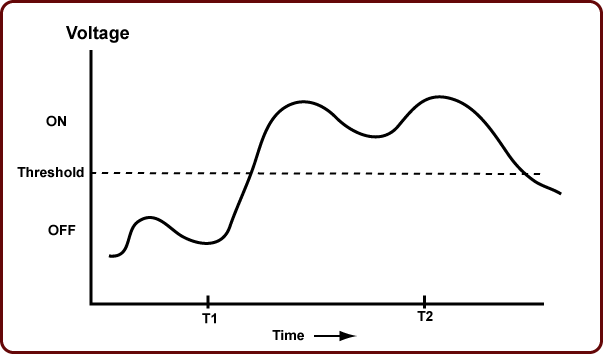An Analog Signal
An analog signal may continuously change in value. Its values can be anything within a range of values, and its exact value at any time is important. The graph below represents an audio signal. The exact value at each time is part of the information it contains. For example, the value at time "T2" must be measured exactly.

Now say that you are observing the voltage of a wire. It has been agreed that any voltage below a threshold will be counted as an "off" signal, and that any value above the threshold will be counted as an "on" signal.
